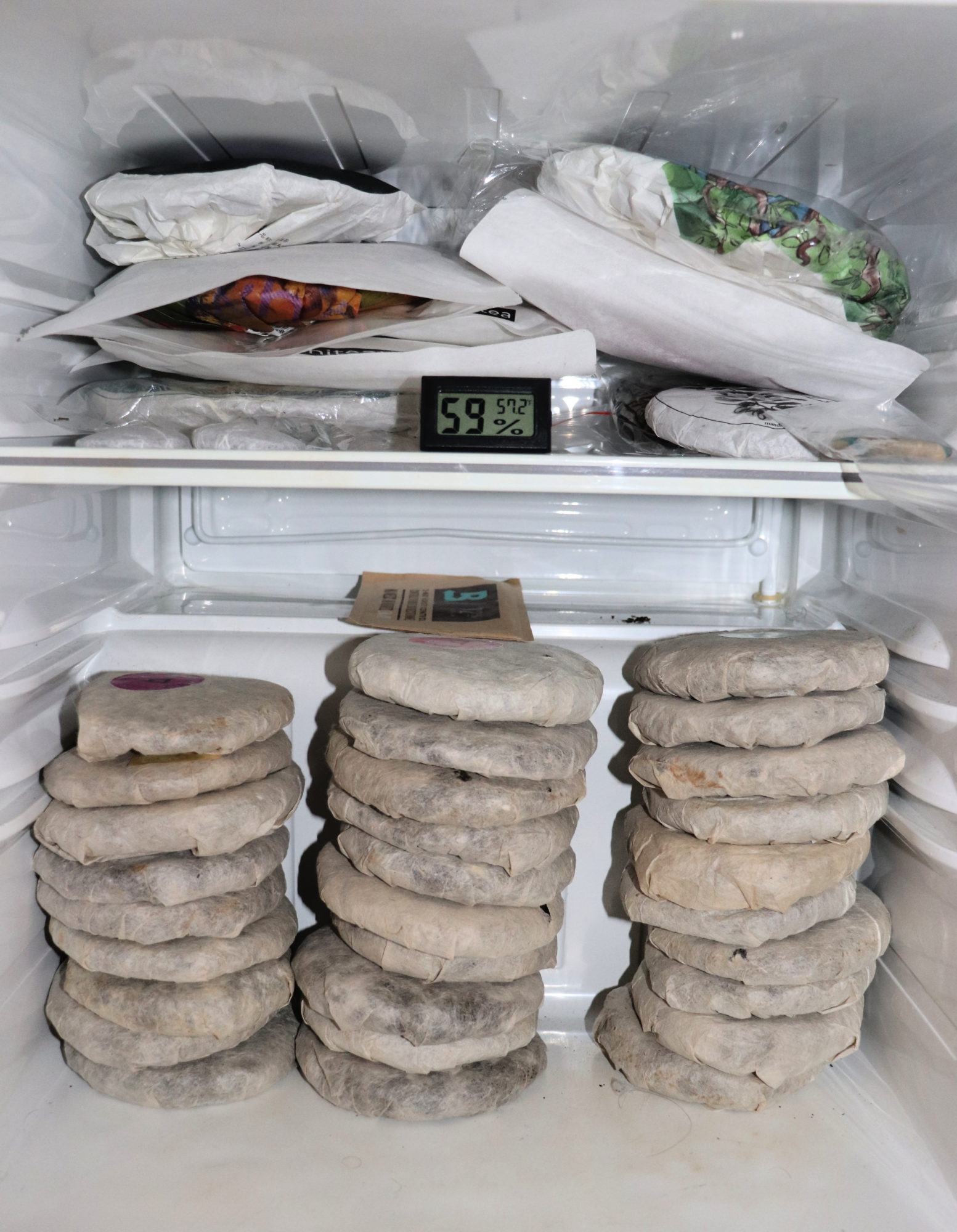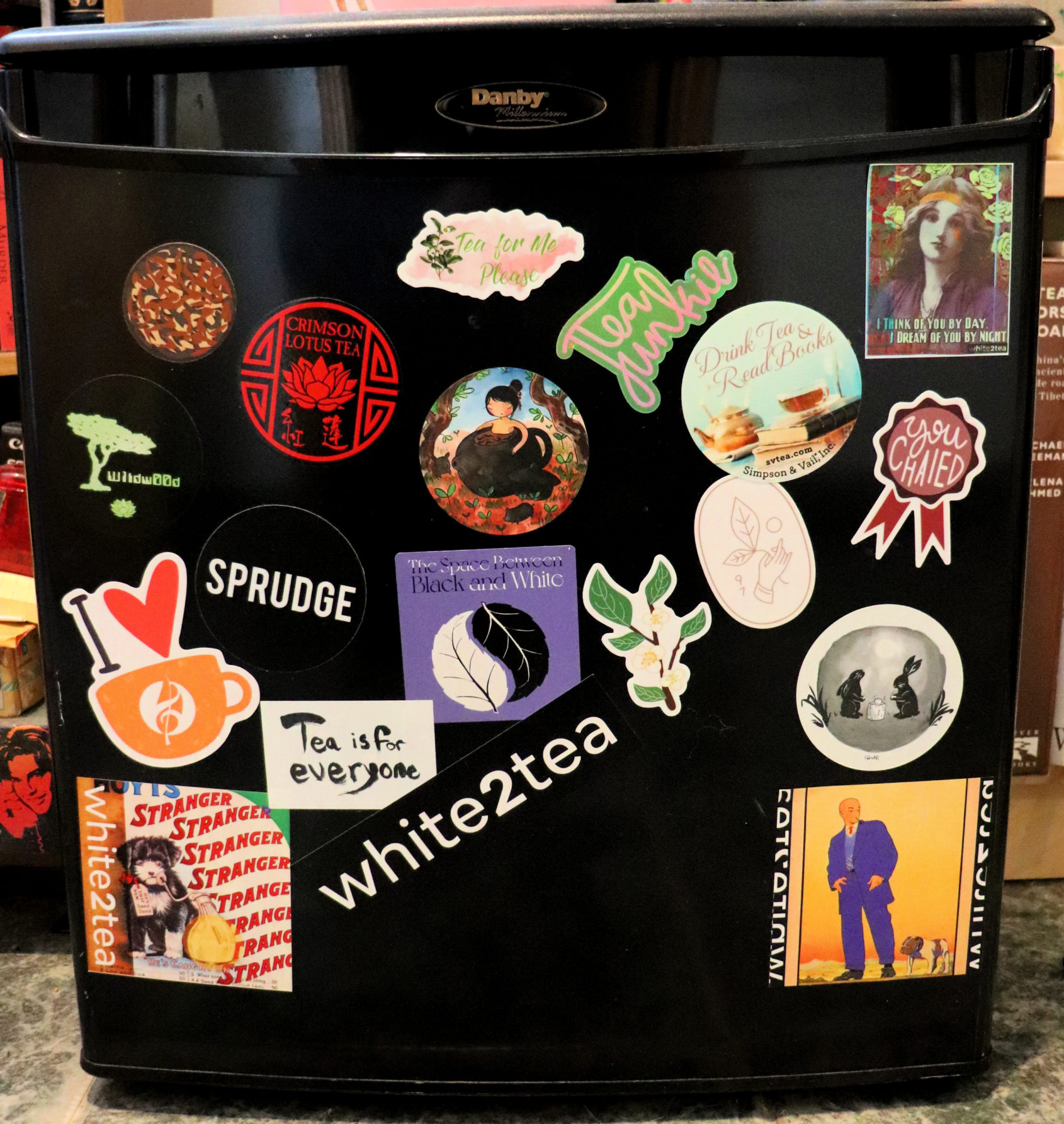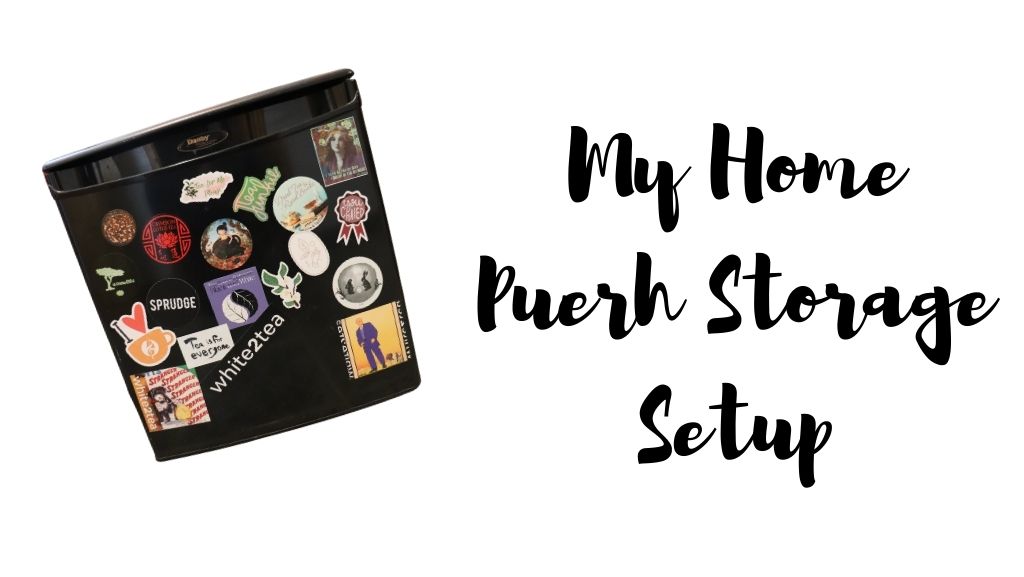This post contains affiliate links. I may earn a commission for purchases made through these links at no additional cost to you. You can find my privacy policy here.
Recently I’ve gotten a lot of questions about home puerh storage. I was a bit hesitant to write about it because this can be a contentious topic. Let me start this post by saying that I am in no way an expert on puerh storage. This set up is just what works for me and my tea. TeaDB has written a lot of really great articles if you’d like to dig deeper.
I never really gave much thought to puerh storage until fairly recently in my tea journey. That is partly due to the large amount of tea I have and because I live in New Jersey, where the weather isn’t super extreme. One winter, we had a mouse who decided to move in with us and nibble his way into a big bag of lovely white tea. I had no choice but to throw it all out since it was likely to be contaminated. Only I would have a mouse who likes tea!
The mouse incident got me started researching and reading blogs from all of the puerh heads that I know. Some people have really intense setups that could run the risk of mold if something were to go wrong. I personally don’t enjoy the taste of traditionally stored tea, so I knew that I didn’t want anything crazy. The main goal was simply to protect and maintain the puerh that I had collected over the years.
My Puerh Storage Goals
- Protect from excess heat or moisture
- Maintain some moisture to help the cakes age
- Protect from non-tea aromas
- Protect from pests
What My Setup Looks Like
I was super happy to find that my parents still had my old mini fridge from college. Many people use these (not plugged in!) because the seal on the door helps keep moisture inside. It had somehow survived being used by both my brother and me without any weird odors. I gave it a thorough cleaning and then aired it out for about a week before putting in the tea.
Some tea friends recommended adding some moisture to the setup, so I purchased Boveda Packs. These are often used for cigar storage and offer the advantage of not having actual liquid near the tea. Some people recharge them periodically, but they are fairly inexpensive. I will most likely just order more when the time comes.
Along with adding moisture, it is important to watch the humidity levels to avoid mold. I purchased some inexpensive hygrometers on Amazon, and the batteries are still going strong a few years later. My pumidor stays pretty consistently close to 60% relative humidity. If I open the door, it dips down but will usually go back up again without me having to do anything.

Is It Worth It?
I was skeptical at first because my tea tasted just fine before. That being said, I have definitely noticed a difference in the teas that I know really well. They’re much more aromatic than they had been in my previous Ziploc baggie in a drawer system. Sheng puerh will continue to age over time, and the stable humidity level definitely seems to be helping that process.
Whether or not it is worth setting up a special puerh storage in your home will be different for each person. If you drink a decent amount of puerh, it is definitely worthwhile to try a simple setup like this to see if you would enjoy the results. You can always upgrade down the line if your collection starts to outgrow it.
What does your home puerh storage look like? Tell me about it in the comments below!


Curious to know what method you use to keep track of your pu cakes,
since the wrappers and neifei are always in Chinese, unless of course
you read Chinese. I’ve been using post-it notes with descriptions in
English for lack of a better way.
There are so many western facing vendors now that this isn’t much of a problem anymore. I try to label any teas that don’t have English on the wrappers when they arrive. That way it’s easy to reference where it came from and how old it is.